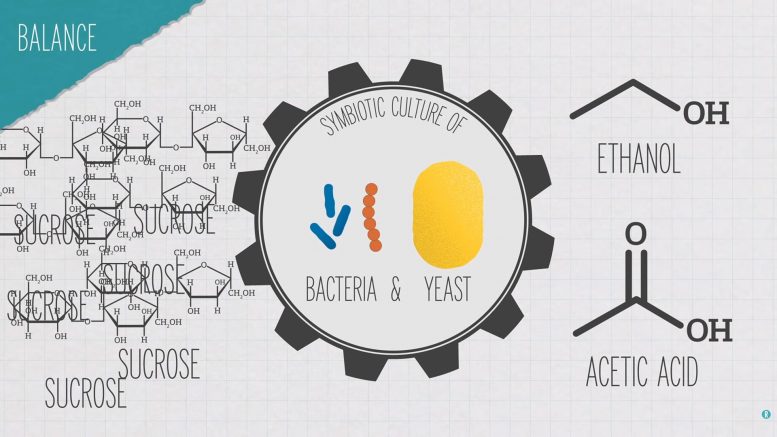
Kombucha, a fizzy, fermented tea, has surged in popularity within the health and wellness community over the past decade.
Kombucha is a bubbly, fermented tea that has gained popularity in the health and wellness scene over the last decade –– but what is it exactly? This week, the Reactions team breaks down kombucha’s chemistry and investigates which ordinary beverages they can turn into kombucha:
Video Transcript:
I love kombucha, but what is it? And what is this?
Delicious. Delightful.
Kombucha is a fermented tea. It’s made by combining tea, sugar, and a symbiotic culture of bacteria and yeast, or a SCOBY. That mixture then sits around for about two weeks until it’s ready to drink.
The scoby is really the one doing the work here. It breaks down sugars and creates the flavors that make kombucha unique.
What you’re seeing is mostly cellulose and that’s made by bacteria. I like to think of this as kind of a city that the bacteria and yeast can live in. In that cellulose city the bacteria and yeast are working together to break down sugar through two types of fermentation: alcoholic fermentation and acetic acid fermentation.
The yeast in the scoby are mainly creating alcohol. They produce an enzyme called invertase that breaks apart the sugar, or sucrose, into its smaller sugar components: fructose and glucose.
From there the glucose is broken down into pyruvate, then acetaldehyde, and finally ethanol, releasing carbon dioxide in the process. CO2 is what makes kombucha a little bubbly, and ethanol is why kombucha always has that contains some alcohol label.
But don’t get too excited, unlike beer yeast the yeast in scoby can’t survive in higher alcohol concentrations, so they don’t make anywhere near as much ethanol as even the lightest beer.
The bacteria in the scoby convert a lot of that ethanol into acetic acid. This gives kombucha a bit of a vinegary kick. You need a balance between breaking down sugar and producing alcohol and acetic acid if you want to make kombucha that actually tastes good.
If you don’t add enough sugar the scoby runs out of its food source and fermentation stops. If you add a ton of sugar, or if you let it go too long, you might end up with a lot of alcohol and a lot of acetic acid, which can also stop fermentation. So instead of a hint of vinegar your kombucha will taste like vinegar straight from the bottle.
It should be pretty clear at this point that making a kombucha means finding the perfect balance. But how delicate is that balance?
How would scoby do in an environment that’s already pretty acidic, like coffee, or pretty alcoholic, like wine?
I convinced George to, yet again, do an experiment with me. This time we are testing a bunch of beverages and asking will it kombucha?
[ANNOUNCER] It’s time to play Will It Kombucha?
Sam and George will try to make kombucha out of a variety of different beverages. If the scoby shows significant growth, and carbonation is formed, and the pH drops to 4.6 or below, it will be considered safely kombucha’d, which means that Sam and George will win the prize of getting to try their disgusting new beverage. Here’s Sam…
[SAM] Wait, important safety disclaimer. We sterilized the jars, and we didn’t drink any beverage that didn’t fulfill these three criteria: the scoby got bigger, the pH was below 4.7, and there was no mold growth. There’s the potential for things to grow that could make you very sick, so if you don’t have a lot of experience making fermented stuff please stick to a trusted recipe.
So this is black tea and sugar. So you can see that there’s carbonation.
[GEORGE] Oh yeah.
[SAM] You can see this new growth here. This is pretty dark I would say it’s at a pH of about three.
[GEORGE] That’s not bad.
[SAM] Yeah so this, not so shockingly, definitely booch’d. The pH dropped quite a bit, so i’m gonna take a little sip. Tastes really good. Delicious. I’m 100% gonna finish this today.
[GEORGE] So what I did here was I put cocoa powder, and sugar, and scoby. This is without the scoby. There’s an incredibly impressive mold mountain. Now let’s look at the cocoa-bucha version. There is no mold growth here. Oh god that smells. Oh I would say this actually kind of kombucha’d.
There’s no mold growth, the scoby looks like it expanded, so it actually it really did um like it really did actually create more of itself.
[SAM] This is a moscato, and it actually only has an alcohol content of seven percent. There was no new scoby growth. I’m just curious if it changed the pH at all. Yeah that looks pretty much the same.
[GEORGE] So I’m going to do honey next. This is our honey scoby you can clearly see there’s carbonation there, those are the the bubbles. Let’s pH it. Hey that’s acidic.
[SAM] It’s like what like a four?
[GEORGE] It looks like a four. Yep, we’re right bang on four. All right I’m gonna taste it. Honey bucha here we go. That’s really good. I’m surprised. It’s like honey, it’s carbonated, it’s acidic, it’s good!
[SAM] All right I’m gonna do apple juice. Really distinct layer of scoby formed. What’s interesting is that it’s so thick that it like popped up. Oh! It’s like a disc.
[GEORGE] That really worked.
[SAM] Yeah it really worked. Oh yeah, I would say it’s like between a four and a five. That was actually pretty good. I was trying so carefully to not like eat the scoby that was coming down that I spilled it all over myself. It’s pretty good, it kind of just tastes like carbonated apple juice, with a little bit of vinegar as a an extra flavor note.
[GEORGE] Next up we’ve got our cola bucha. The scoby is still in the same shape as when I put it in, but it does look bigger, so maybe something happened. A tiny little bit of scoby action here. I mean something happened, I don’t think it kombucha’d but something did happen there. My thought here was if I just add scoby to regular cola, it’s too acidic, it’ll kill the scoby, so I neutralized some cola with baking soda, and then added scoby.
[SAM] Interesting.
[GEORGE] and here is the result.
[SAM] Oh you got some growth.
[GEORGE] I got some growth.
That tastes exactly like cola. If you had given that to me blindfolded, I would not have known that there was scoby in that.
[SAM] So my final one uh iced coffee with sugar. It kombucha’d. I did not think it was going to, but there’s some intense new scoby growth here.
My mind was kind of blown, I really thought that it was just going to be too acidic of a starting environment to be able to get any growth but, smells real weird. Oh wow, yeah, that was a quick change. It’s about a four, I would say. So yeah, this iced coffee with sugar kombucha’d. Smells a little weird.
Oh, not good. Would not recommend.
[GEORGE] I’m gonna I’m gonna go ahead and taste this disgusting looking cocoa-bucha. This is the one with the scoby, the scoby clearly grew, here we go.
Oh that is disgusting. It tastes like if you took hot chocolate and, oh there’s like waves of like fermented grossness.
[SAM] Sounds awesome.
[GEORGE] Okay I’m gonna go wash my mouth out with dish soap.


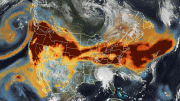


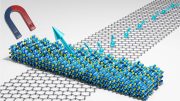

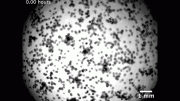
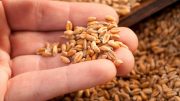
Good kambucha production requires a chemist. You can taste the difference when it is made by someone who knows what they are doing.
kOmbucha, with an O. Kombu=Japanese for mushroom, ‘cha’- Japanese for tea. Hence ‘mushroom tea’. Please spell it right if you’re going to act knowledgeable about it, quite tired of hearing ppl say ‘kambucha’
There is a plethora of already delicious foods around. For me, anything that has set around long enough to ferment is off the grocery list. Just saying.
Guess there won’t be any beer, wine, or pickles ever on your grocery list. Might as well nix yogurt and cheese as well. Your loss 🤷♂️
‘Honey kombucha’ is already a thing, called jun, with the one exception that jun is made with green instead of black tea